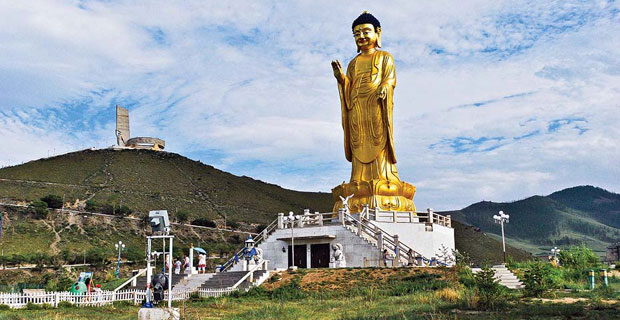Buddhist Impacts on Culture and Civilization of Mongolia
The other day I happened to be invited to the second Edition of the Bodh Gaya Global ...
Thus, from Chinggis to Togoontumur all the great khans were relying on Dharma Gurus. Particularly, the monasteries, statues and stupas built during the Yuan dynasty are countless. The manuscripts “Shebya Rabsel” written by Phagva Lama at the request of Chingim, a son of Kublai khan was block-printed. This sutra, written in the Square script then the official script of the Yuan dynasty, obviously attracts interests of scholars because Mongolians used all the Buddhist terms and notions that were used in the Uighurjin Mongol script when they translated Buddhist manuscripts from the Tibetan language. The Grand White Stupa built in the capital city of the Yuan dynasty by the decree of Kublai khan is a historical property that provides with valuable information of the Yuan dynasty even nowadays.
The XIII century’s famous annals “The Sacred History of Mongols” (Chapter 261 to 264) referred to India as Hindu or Hindustan and the river of Indus as Sindhi or a “Shine or New river”. At the time of Ligden khan Mongolian scholars completed translating entire Kangyur and Tengyur sutras. By the end of XV century Mongolian noblemen extensively contributed to the spread of Buddh Dharma. Amongst them Altan khan of Tumed invited His Holiness Sonam Gyatso to Mongolia and himself became his spiritual disciple and bestowed the famous title of “Dalai Lama” to His Holiness.
Mongolian scholars wrote a large number of sacred texts on the tradition of Dharma. In the XVI century, there were three great Buddhist figures spreading Dharma. At the grace of Neij toin (Avid) from Inner Mongolia, Lofty Venerable Zanabazar (Gyani Vajaru) from khalkha and Jaya Pandit Namkhaijamtso from Oirad, the Gelugpa tradition flourished in its full zenith. At this time, all Mahayana manuscripts were entirely translated into the Mongolian language.











Comments.